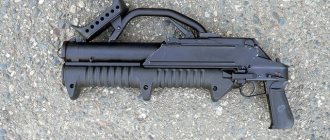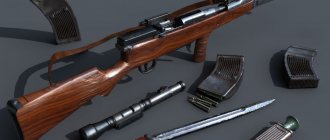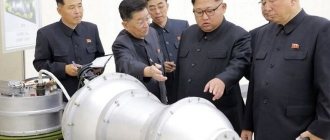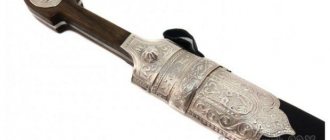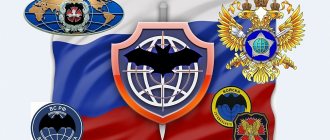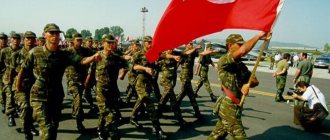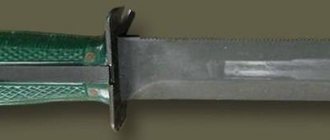Russian special forces: everything about the country's military elite
Analyzing the special operations forces (SSO) of any country is far from an easy task, and objectively analyzing Russian special forces is doubly difficult: against the backdrop of the current reform of the army with a special emphasis on special forces, even foreign intelligence services may probably get confused. But it makes sense to take on this matter.
In the 30s of the last century, the first airborne units appeared in the USSR, which, with the demonstration of their maneuvers, shocked foreign military experts. Later, US special forces units will have their own paratroopers - this was a response to the demonstration of the potential of this type of troops created by V.F. Margelov.
The revival of airborne units with their airmobile functions began in the 50s. A historical moment is the appearance of an airborne combat vehicle (BMD): this equipment was dropped from the air and was a maneuverable combat vehicle of the Airborne Forces. In 1968, the USSR succeeded in invading Czechoslovakia precisely because the airborne units fully completed all their tasks. Then the blue beret appears - the current constant attribute of the Airborne Forces.
It is believed that with this color of the beret (before that it was red), the leadership of the USSR tried to mislead local residents so that they would confuse Soviet paratroopers and the UN “blue helmets”. But the blue beret eventually took root, and it’s impossible to imagine a paratrooper without it.
In 1999, a unit of the Russian Airborne Forces made a legendary forced march to Pristina, ahead of specialists from the British KFOR with the occupation of Slatina airport. Several hundred Russian paratroopers forced the NATO command to completely change all their original plans, because the death of even one Russian special forces soldier would be equated to an attack on all of Russia.
The Soviet and Russian landing forces also had their own “special units”: sabotage and assault battalions (DSB) or airborne special forces. Enhanced training, the possibility of landing both by parachute and on cables or by direct jump at low altitude from helicopters - this is their profile.
Marines
It so happened historically that the Russian Marines did not stand out particularly in terms of the number of fighters. Here the emphasis was placed on the quality of training and on the ability to engage in battle during a drop “from the water.”
In principle, the marines of almost all countries have similar traditions. Let the “marine” status not be misleading: in the mountains of Chechnya, Russian special forces units paid special attention to the Marines, although there was never a “water landing” there.
“Alpha”, or department “A” of the TsSN FSB of Russia
When Yuri Andropov, a native of the KGB, became the Secretary General of the USSR, he formed an elite unit formally called upon to carry out anti-terrorism tasks in the city. But in fact, the functions of this Russian special forces structure have always been much broader.
The assault on Amin's palace is the first and most high-profile operation in the history of Alpha. Well, in the future there was not a single large-scale special operation, especially in the city and in a clash with terrorists, so that this group of Russian special forces did not take part.
Perhaps not everyone knows that due to attempts to manipulate and use this fighting elite in the early 90s, the fighters went through serious demoralization, and many officers wrote letters of resignation. However, the country came to its senses in time and stopped the destructive process, returning Alpha to its former status.
Departmental and army special forces
Departmental special forces compete with the army in numbers, directions and specifics of the activities of special forces - such structures are found in the SVR, FSB, Ministry of Internal Affairs, FSIN, Ministry of Emergency Situations, bailiffs and a relatively new institution reporting directly to the President of the Russian Federation - the Russian Guard.
In the Armed Forces of the Russian Federation, in the General Staff Headquarters alone there are over a dozen special forces. There are more than ten such battle groups in the Russian Navy.
Expert opinion
Grigoriev Pavel Kirillovich
Head of the department for conscription of citizens for military service of the Russian Federation
A special airborne brigade is based in Kubinka. The special operations units of the Russian Armed Forces (separate special forces groups) have proven themselves well in the fight against Somali pirates, in operations in the North Caucasus and Syria.
About 10 special forces groups of the FSB of Russia, the most famous of which are Alpha and Vympel, are based in different cities of the country. In addition to them, there are also units of the border service, which also belongs to the FSB.
Tasks and structure of the Russian Navy
During martial law, the naval special forces of the Russian Federation are engaged in:
- mining ships, militarized naval bases and hydraulic structures of the enemy;
- search for and further physical destruction of enemy weapons intended for nuclear attack and the points that carry out their operational control;
- detection of other enemy objects and accumulations of manpower in the coastal zone;
- providing landing operations in the coastal zone;
- directing and adjusting air and naval artillery strikes against identified enemy forces.
In peacetime, Russian naval special forces are engaged in the fight against terrorism and exchange experience with other special forces.
The staff of the naval special squad includes 124 people - 56 of them are fighters, the rest are technical personnel. The fighters in the squad are divided into units and act autonomously. Each of these groups consists of 12 people. They are divided into groups of 6 people: an officer, a midshipman and four sailors.
The Russian naval special forces are represented by three detachments, each of which performs its own task:
- The first detachment is intended to destroy enemy targets located on land. The detachment's tactics consist of a discreet underwater approach to targeted enemy targets with further sabotage. The fighters act as divers and act on the spot as saboteurs of the Main Intelligence Directorate.
- The second detachment is engaged in reconnaissance work.
- The third detachment of naval special forces carries out underwater mining of ships, naval bases, manpower locations and other important enemy targets. The detachment's fighters train especially intensively for the role of combat divers, since they operate primarily not on land, but under water - they conduct sabotage work and carry out attacks.
Running is a “generally reconciling” procedure
Each special forces unit, whether military or non-military, has its own specifics and criteria for training its contingent. In the special forces of the Airborne Forces, GRU and FSB, one of the main requirements for a candidate is endurance. Running in this sense is one of the key options for testing professional suitability.
According to Viktor Ivannikov, a physical education teacher and owner of a maroon beret, a candidate for airborne special forces is required to run fast and for a long time. The ability to cover 10 km in less than an hour is a good indicator.
There are similar requirements for a runner in the GRU special forces (there, according to former GRU instructor Sergei Badyuk, running also alternates with crawling on the ground).
One of the main features of training a real special forces soldier of any combat structure is breathing training. Therefore, the special forces of the Ministry of Defense and other Russian special services often conduct training in mountainous areas.
In both the Airborne Forces, the GRU, and the FSB, the requirements for candidates for special forces are similar in form - the fighter hardly rests between performing successive exercises. A special forces soldier of the Airborne Forces (and the GRU) must do push-ups from the floor on his fingers and fists, interspersing this procedure with other strength exercises (lunges, “jumps”), 85 times (for a candidate for the FSB special forces, the “limit” is 90 push-ups).
An applicant for admission to the GRU special forces must run a 3000 m cross-country race in 10 minutes (in the FSB - a minute more), a hundred-meter race in 12 seconds (in the FSB this is a 10x10 shuttle run, when the candidate runs 10 meters, then turns 180 degrees and overcomes the for a while the same distance - this is how his speed and strength qualities are tested; time - 12.7 seconds). Press (for the GRU) - 90 times in 2 minutes (for the FSB - 100).
The number of push-ups is the same - 90.
In the FSB special forces, they also practice barbell bench press (no less than their own weight) - 10 times. Then all candidates for special forces (Airborne Forces, GRU, FSB) have a demonstration of punching and kicking techniques, sparring with partners and other exercises.
All of the above tests follow each other, with a break of 2-3 minutes at best. Only a well-prepared person can withstand all this.
Therefore, a potential candidate for special forces is not just a hardy fighter, but also a discharge athlete.
What are the requirements for special forces officers?
Applicants who want to join the special forces are subject to the following requirements:
- The candidate must be between eighteen and twenty-five years of age. Older employees do not serve in special forces.
- The height of a special forces officer must be from 165 to 185 centimeters.
- A special forces employee must weigh at least 75 kilograms. The upper weight threshold should not be more than 100 kilograms.
Also, an applicant who wishes to enlist in the special forces must have no criminal record. And also unpleasant facts in the biography. In addition, the teenager’s family should not have any convicted or alcohol- or drug-dependent relatives.
The average salary for special forces employees is about fifty thousand rubles. Its growth is influenced by a huge number of factors. Titles and positions. Employees of special forces also receive bonuses for business trips.
Distinctive features[ | ]
- Special status within the industry department.
The specifics of the activities of special purpose units leaves its mark on units of this category within a ministry, department, army, aviation or navy, depending on departmental affiliation. The activities of each such unit of the Special Forces are secured by a separate regulatory legal act. Special functions require more specific weapons, equipment, equipment, and transport, which affects higher (in proportion to the number) funding in contrast to other units. The level of combat training requires the presence of an enhanced training base and separate training centers. - Professional status
- special forces and units are often staffed with the participation of a larger number of long-term contract employees, which is explained by the high cost of education and training of military personnel of special forces units[3], as well as the fact that soldiers who go to carry out an operation voluntarily are preferable to those who are forced to fight[ 4]. - High level of moral, psychological, ideological, physical and combat training of personnel.
Special forces units, as a rule, perform tasks in specific conditions, which require a high level of training. The quality of personnel is the main distinguishing feature of special forces[4]. - Availability of special means of defense and attack.
Special Forces units have weapons, equipment and vehicles with narrowly targeted characteristics, higher than those available in the sectoral department of the state[4]. This is due to the tasks assigned to special forces units. In addition, special forces units have narrowly targeted means (for example, special reconnaissance means, special assault means). Training personnel for special forces requires higher costs. - Ability to perform tasks autonomously under extreme conditions.
Due to the frequent need, in accordance with their mission, to act in isolation from the main forces, including behind the front line and deep behind enemy lines, special forces groups are forced to cover significant distances from their territory to the place of execution of the task independently, moving far from populated areas and expensive As a result, the event can last a very long time, which requires the delivery of all equipment and equipment, including provisions. Greater autonomy of special forces groups and their skills in operating in extreme situations are necessary for them when carrying out sabotage. Due to the small number of special forces groups, the difficulty of obtaining fire support and evacuation, and the need to fight on foreign territory, they must be able to fight with much greater efficiency than military personnel of regular units.
Certain misconceptions about special forces units are caused by some confusion in terminology and stereotypes that have developed in society. In the USSR, the term “special purpose” was applied to formations back in the 1930s[5]. By the time sabotage and reconnaissance units were created in 1950, the country already had a special purpose regiment (Kremlin regiment) and other units and formations, in addition to special forces
appointments (CHON), available, in particular, as part of the internal troops.
Units and formations of the Special Forces of the Russian Ministry of Defense
Units and formations of the GRU Special Forces: By 1991, the USSR Armed Forces included units and formations of the GRU Special Forces:
- 14 separate special-purpose brigades (obrSpN), two separate training regiments, separate detachments (ooSpN) and special forces companies of the Ground Forces,
- two special forces, three naval reconnaissance points (MRP) of the Navy
As of 01/01/2010, the Russian Armed Forces Special Forces group includes [2]:
Parts and formations of the Special Forces GRU GSh
- Training units of the Special Forces of the GRU of the General Staff of the USSR Ministry of Defense
- 2nd separate special forces brigade of the GRU (Promezhitsy village, Pskov district, Leningrad Military District)
- 3rd Separate Guards Special Purpose Brigade (Chernorechye PriVO)
- 10th separate special forces brigade of the GRU (Molkino village, Krasnodar region, North Caucasus Military District)
- 14th separate special purpose brigade of the GRU (Ussuriysk, Primorsky Territory, Far Eastern Military District)
- 16th separate special purpose brigade of the GRU (Tambov, Moscow Military District)
- 22nd separate guards special purpose brigade of the GRU (Stepnoy settlement, Rostov region, North Caucasus Military District)
- 24th separate special purpose brigade of the GRU (Irkutsk, Siberian Military District)
42nd naval reconnaissance point (Russky Island, Haluai Bay, near Vladivostok, Pacific Fleet);
- 420th naval reconnaissance point (Polyarny settlement, near Murmansk, Northern Fleet);
- 431st naval reconnaissance point (Tuapse, Black Sea Fleet);
- 561st naval reconnaissance point (Parusnoye village, near Baltiysk, Kaliningrad region, Baltic Fleet).
Detachments for combating underwater sabotage forces and means:
- 160th OOB PDSS (Vidyaevo, Northern Fleet);
- 269th OOB PDSS (Gadzhievo, Northern Fleet);
- 313 OOB PDSS (Sputnik village, Northern Fleet);
- 311th OOB PDSS (Petropavlovsk-Kamchatsky, Pacific Fleet)
- 313th OOB PDSS (Baltiysk, Baltic Fleet);
- 473rd OOB PDSS (Kronstadt, Baltic Fleet);
- 102nd OOB PDSS (Sevastopol, Black Sea Fleet). [3]
Parts and connections of the Special Forces of the Airborne Forces
Police special forces (SOBR)
SOBR (special rapid response department) are federal and regional special units of the Ministry of Internal Affairs of the Russian Federation, which were regularly included (until 2003) in the Department for Combating Organized Crime of the Ministry of Internal Affairs of the Russian Federation (units of over 200 people were called squads from the late 1990s). Since 2002, SOBRs have been disbanded, some employees were asked to move to OMSN (Special Purpose Police Unit).
In 2011, in connection with the reform of the internal affairs bodies, and the renaming of “militia” to “police”, OMSN detachments were renamed OSN (special forces). Since 2012, all OSN units have been given the name SOBR (special rapid response unit).
The main task of creating SOBR is the fight against organized crime, in all its manifestations, in all types and methods, and against terrorism. Special forces were also successfully used in military operations carried out in the TFR.
Expert opinion
Grigoriev Pavel Kirillovich
Head of the department for conscription of citizens for military service of the Russian Federation
SOBR KM GUVD for Moscow is the very first special forces detachment in the system of the Ministry of Internal Affairs. Founded in 1978. SOBR officers are constantly on business trips in the North Caucasus.
In accordance with existing agreements, SOBR officers are allowed to take tests for the right to wear a maroon beret, taking into account their specific service and assigned tasks. This is expressed in slightly modified tests.
Special purpose departments of the Federal Penitentiary Service of Russia
Special units of the Federal Penitentiary Service. They are part of the structure of the territorial departments of the Federal Penitentiary Service for the constituent entities of the Russian Federation.
Currently they are called “Special Purpose Departments”. The tasks of the units include the prevention and suppression of crimes and offenses at the facilities of the Federal Penitentiary Service, the search and capture of especially dangerous criminals, ensuring security at special events, the release of hostages taken by convicts, as well as the protection of senior officials of the department.
Created during the period when the Penitentiary System (GUIN) was part of the Ministry of Internal Affairs.
Gallery[ | ]
- Special forces units of different countries
- EKO Cobra (Einsatzkommando Cobra) (Austria)
- RENEA (Reparti i Neutralizimit të Elementit të Armatosur) (Albania)
- GSG 9 (Grenzschutzgruppe 9) (Germany)
- GEO (Grupo Especial de Operaciones) (Spain)
- PGK (Pasukan Gerakan Khas) (Malaysia)
- SWAT (Special Weapons And Tactics) (USA)
